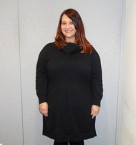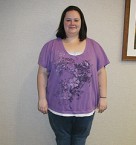sand filter media size
Glass is a suitable filter medium of similar specific gravity to sand. The uniformity coefficient (UC) is expressed as: where d60 is the size of aperture through which 60% of sand passes. Downflow filtration allows deep, uniform penetration by particulate matter and permits high filtration rates and long service runs. False tank bottoms with appropriately spaced strainers are also used for underdrain systems. Rx Pool Sand Alternative. However, RSF removes suspended solid along with biological particles. However, knowledge about the required biomass start-up times and presence of specific microbial communities in RSF systems is severely limited. Filter Gravels. This type of filter captures particle sizes down to very small ones. Silica sand is the oldest and most trusted media for sand filters. 26.6) are gravity-driven depth filters with countercurrent flows of filter sand and dirty fluid. A low level in the backwash storage section breaks the siphon, and the filter returns to service. Removal of Giardia cysts and Cryptosporidium oocysts was shown to be affected by extent of filter maturation and application of coagulant chemicals. 26.7 and 26.8. For cleaning of rapid downflow filters, clean water is forced back up and through the media. The tank's special internal design keeps the sand bed level, ensuring even water flow and resulting in efficient filtration. Typical support beds consist of 1 8-1 in. The ideal sand media for intermittent sand filters is a coarse sand with an effective size between 0.3 mm and 0.5 mm. gravel or anthracite in graded layers to a depth of 12-16 in. Part of this material will be used to make the concrete filter box (if constructing a concrete filter). Other types include cross-flow membrane filtration, “DynaSand®”-type continuous sand filters, as shown in Fig. Trouble follows quickly if for some reason filter runs become short, because then the filtered water used for backwashing uses up a large percentage of the filtered water and the net output of water falls sharply. The sand should be of the quartz grade with a specific gravity in the range 2.6–2.7. deep bed of sand or anthracite. Graded silica quartz sand and anthracite supported by layers of graded underbed, consisting of pebbles and gravels, are provided with a water inlet at the top. Sufficient freeboard must be provided to prevent loss of a portion of the filter media during operation at maximum backwash rates. The bottom drainage system is kept to collect filtered water. All sand is different, so don’t trust just any old bag of sand. Instead, the particulate matter is adsorbed on the sand in the layers below the surface. Figure 7.9 shows the inlet distributor, whereas Figure 7.10 shows the bottom drain collector for a high-rate rapid sand filter. for 0.85–1.7 mm sand the hydraulic size is 1.16 mm. Course at the bottom to stop the sand being washed through, medium in the middle and fine at the top to catch the finest size … … Backwash water may be returned to the clarifier or softener for recovery. sand is removed from the surface of a bed and replaced with 4-8 in. Typical of this class is the rotary vacuum drum filter shown in Figs. Our pool sand and water filter sand meet the exacting standards set for drinking water and pool water filtration media. Glass is a suitable filter medium of similar specific gravity to sand. 4. The DP gradually builds up for a given flow rate as particulate solids are captured in the bed; this may not be uniform with depth. Pressure filters, designed vertically or horizon-tally, have cylindrical steel shells and dished heads. … Other filter media such as anthracite (Section 8.6), granular activated carbon (Section 8.8), garnet, pumice (Farizoglu, 2003), expanded clay or glass are used in filtration application. For example, high ionic strength reduces the electric double layer around microorganisms and filter media, thereby increasing attachment efficiency between the two. For the most part, pool owners use a #20 silica sand for their filters. In general, rapid sand filters use sand with an effective size of 0.35-0.60 mm (0.014-0.024 in.) Larger feed particles (>100 micrometres) will … The rapid sand filter is operated with clarification ahead of the filter. Garnet is a dense (s.g. 3.8–4.2) medium which is used as the bottom layer of multimedia filters containing anthracite and sand. The use of too many different media layers can cause severe backwashing difficulties. The effective size of a given sample of sand is the particle size (in millimetres) … Typical service flow rates are 5-10 gpm/ft². The pressure loss rises as the dirt builds up and the filter must be cleaned when it reaches about 3 m WC, otherwise the dirt can be pushed right through the filter. The filter backwash fluid is taken to a common inlet chamber of raw water pumps. Other … RSF is constructed in a rectangular tank usually made up of concrete. This process is also referred to as in-line filtration, or contact filtration. Homogeneous sand of effective size up to 1.3 mm has also been used. The rest will be further sifted to make the sand filter media. Backwashing might reduce the biomass concentration in RSFs by as much as 20%, although the impact of backwashing on filter performance is not regarded as significant [7]. Coarse-grained sand and gravels efficiently remove suspended solid by straining and adsorption. Figure 26.6. Given good backwash arrangements, and on a water low in suspended matter, sand filters are simple, reliable, cheap and have low operating costs. Three to five layers of graded gravel are installed at the bottom of tank over a network of drainage pipes placed on the floor. 600 lbs (1) 925 lbs (1) During this COVID-19 pandemic, Pentair global operations and supply teams are working diligently to help ensure our valued customers are getting … Backwashing of pressure filters normally is done once every 24 hours while the system is online. The effective size of each granule of sand typically varies from 0.35mm – 1.2mm. Media in rapid sand filters may range in size from 0.35 to 1.0 mm, with a coefficient of uniformity of 1.2 to 1.7. For example, if all four materials listed in Table 6-1 were used in the same filter, a wash rate high enough to expand the magnetite layer might wash the anthracite from the filter. 6/10. Also, it facilitates even distribution of water through filtration media during backwash. … The effective size, d10, is defined as the size of aperture through which 10% by weight of sand passes. These backwashing arrangements are critical, and providing the large flow of backwash water, as well as drainage for its disposal, can often create difficulties. For applications requiring a finer sand the two upper layers are changed to 0.7 m of 0.5–1.0 mm sand (effective size 0.55 mm) and 0.1 m of 1.0–2.0 mm coarse sand, the gravel layers remaining the same. For media with size range 1:2, the hydraulic size is approximately 1.36× the lower size in the range; e.g. The use of pressure filters eliminates the need for repumping of filtered water. A typical size might be 0.5 mm, with an effective size of 1.3 to 1.7 mm. High-Rate Sand Filter Media: Pool filter sand media is one of the oldest methods of purifying water. Both are used in defining filter media, in this case to know whether a type of media is or is not suitable for slow sand filtration. Inlet distributor for a high-rate rapid sand filter. High wash water requirements would also result. Interestingly, the shape of the characteristic curve of efficiency versus filter particle size is a U one with the highest rate of particle capture for the smallest and largest particles, with a plunge in between for mid-sized particles. They are highly recommended for filtering water from ponds, creeks, or irrigation ditches.Sand filters have a seamless fiberglass tank which won't corrode. Control devices that maximize filter operation efficiency. Rapid sand filters have a layer of sand on layers of graded gravel and do not utilize a “Schmutzdecke” layer for the filtration action. Uniformity is measured by comparison of effective size to the size at which 60% of the grains by weight are smaller and 40% are larger. Pressure sand filters (PSF) are used in many industrial applications including a DM plant and often are popularly termed rapid sand bed filters. Sale. Figure 7.8 is a cutaway drawing of a high-rate rapid sand filter showing the internals and the media. Backwash flow rate controllers are also used. Filter gravel is used as a support media to filter sand and coal in water filters. The orifices between such sand particles are relatively large, but dirt is adsorbed onto the large surface area presented by the medium. The media sand grains should be relatively uniform in size having a low Uc value (less … Lower UC values would make the medium costly as a high proportion of fine and coarse medium is discarded and higher values would reduce the voidage. To assist in cleaning the bed, the backwash operation is often preceded by air agitation through the under drain system. The fluidizing flow requirement is typically 5 to 30 m3/hr/m2 of filter bed area, depending on the depth of the bed, for a short period (i.e., for a few minutes only). Sharp, angular media form large voids and remove less fine material than rounded media of equivalent size. Industrial sand filters can use graded support media layers or be installed directly over or on a distribution plate or … The operational conditions to some extent dictate the biological processes in the filters. Hbitsae Pool Filter Balls Media Filters Environmental Protection Filter Media for Swimming Pool Aquarium Filters Alternative to Sand (1.5 Lbs Filter Balls is Equivalent to 50 Lbs Filter Sand) Only 8 left … Air injection during cleaning (not considered backwash because the direction of flow is the same as when in-service) assists in the removal of solids and the reclassification of the filter media. Pressure filters are usually operated at a service flow rate of 3 gpm/ft². This method is practical only for relatively small quantities of water which contain low concentrations of contaminants. Most literature recommends that the effective size of sand used for continually operated slow sand filters (COSSFs) should be in the range of 0.15 – 0.35mm, and that the uniformity coefficient should be in the … When the pressure loss, or flow, is unacceptable, it is sensed by a pressure drop across the PSF of ∼0.5 kg/cm2. Apart from the filter media, the essential components of a gravity filter include the following: Pressure filters are typically used with hot process softeners to permit high-temperature operation and to prevent heat loss. Chemical coagulants are not usually needed but have been used where an ultrapure effluent is required. Unlike slow sand filters, RSF involves only physical process because of absence of biological layer (biofilm) on filter media. UC values should be less than 1.6 and usually lie between 1.3 and 1.5. Low-rate backwash, with no visible bed expansion, combined with air scouring. Backwashing of filter media in RSF may release pathogen from RSF granules. *Trademark of SUEZ; may be registered in one or more countries. Pressure filters are similar to gravity filters in that they include filter media, supporting bed, underdrain system, and control device; however, the filter shell has no wash water troughs. There is no single media specification (size and depth) that can be applied universally for all waters. One solution to the problem of optimizing the pore size profile in the bed is to use layers of different solids, with different densities. Precoat filtration is used to remove very small particulate matter, oil particles, and even bacteria from water. If you get number 20 silica sand, … Effective size = size of aperture through which 10% by weight of sand passes (D10). The filter is then taken out of service and cleaning of the filter is effected by flow reversal or the bed is backwashed or pressure-washed to remove the accumulated particles. Raw water flows downward through the filter bed and the suspended matter is retained on the sand’s surface and between the sand grains immediately below the surface. In-line clarification is the removal of suspended solids through the addition of in-line coagulant followed by rapid filtration. If the particles are all of the same material (i.e. The major advantages of dual-media filtration are higher rates and longer runs. This arrangement produces a filter bed with adequate pore dimensions for retaining … Other factors that were not included in the model such as net surface charge on the filter media and microbial surfaces; media properties (type, size, and depth); hydraulic loading rates; upstream chemical use (oxidants and/or coagulants); water quality variables; flow control; and backwashing and postbackwashing practices may also significantly influence pathogen removal efficiency of filter media. layer of 0.4-0.6 mm (0.016-0.024 in.) It should therefore be tested for friability (BW, 1996). This filtration technique readily yields effluent turbidities of less than 0.5 NTU. Because small particles at the bottom are also more dense (less space between particles), they remain at the bottom. Effluent turbidity levels of less than 1 NTU are common with this method. Rectangular reinforced concrete units are most widely used. Flow rate and head loss gauges are essential for efficient operation. Please remember that the “sand” in a biosand filter… No single media specification (size and depth) can be applied universally for all waters; the choice depends on the water quality and upstream processes, filtered water quality objectives, cleaning method, filtration rate and length of filter runs. Finer sands result in shallower zones for the retention of suspended matter. For obvious reasons, buildup would be more at the higher level with the concentration gradient decaying rapidly. Although most suspended solids are trapped at the surface or in the first 1-2 in. The second method of coagulant pretreatment involves the use of a single chemical, a strongly charged cationic polyelectrolyte. An underdrain system, which ensures uniform collection of filtered water and uniform distribution of backwash water. The homogeneous sand filter has a 0.9–1 m deep bed and typically of 0.85–1.7 mm of sand (effective size 0.9 mm) placed on a 50 mm layer of 4–8 mm or 75 mm of 6.7–13.2 mm gravel. At ambient temperature, the recommended filter backwash rate is 6-8 gpm/ft² for anthracite and 13-15 gpm/ft² for sand. Some filter plant designers use the term ‘hydraulic size’ in place of effective size (Stevenson, 1994). Conventional gravity and pressure rapid filters operate downflow. Vertical pressure filters (see Figure 6-2) range in diameter from 1 to 10 ft with capacities as great as 300 gpm at filtration rates of 3 gpm/ft². After backwashing, the filter is ready to be put back into service. In an attempt at a compromise, grain sizes are generally selected in the range 0.5 to 1.50 mm. Automatic gravity filters are available in diameters of up to 15 ft. George Solt CEng, FIChemE, in Plant Engineer's Reference Book (Second Edition), 2002. Solids are removed within the bed by adsorption and by flocculation of colloidal matter directly onto the surface of the sand or anthracite media. A simple filter will remove most particles down to 5 μm. Trevor Sparks, George Chase, in Filters and Filtration Handbook (Sixth Edition), 2016. Bulk density is about 1.56 g/cc. For a 500 MW TPS, the typical backwashing flow rate would be between 25 to 30 m3/hr/m2 of bed area and the air-flow rate would be 50 m3/hr/m2 of filter bed area. Cutaway drawing of a high-rate rapid sand filter. The filter bed is then precoated and returned to service. The sand should be of the quartz grade with a specific gravity in the range 2.6–2.7. In fact, removal of nanoscale particles such as viruses is governed by diffusion while protozoans are removed by cumulative effect of sedimentation and interception. Loss in weight on ignition at 450°C should be <2% and the loss in weight on acid washing (20%undefinedvv hydrochloric acid for 24 hours at 20°C) should be <2%. Pilot tests should be run to ensure that a reduction in the depth of the finer sand does not reduce the quality of the effluent. This range of media size … After the surface wash (when there is provision for surface washing), the unit is backwashed for approximately 5-10 min. Standard filter sands gradations and filter gravel are available. 20/40. Purposeof!a!Multi’Media!Filter!(Multi!Media!Filter)! Some studies have suggested that a combination with preozonation is required for an RSF to evolve into a biological rapid sand filter (BSF) [5]. The selection of the sand’s grain size is important because smaller sand grains provide an increased surface area and, consequently, more decontamination at the water outlet that, on the other hand, demands extra pumping energy to drive the fluid through the bed. Their varied sizes and jagged edges produce tiny pores small enough to filter out pathogens found in water. RSF must be aided with pretreatment (sedimentation and flocculation) and posttreatment (disinfection) steps to remove pathogens and prevent fouling. Filtration ensures acceptable suspended solids concentrations in the finished water even when upsets occur in the clarification processes. Where a high molecular weight polymeric coagulant is used, feed rates of less than 0.1 ppm maximize solids removal by increasing floc size and promoting particle absorption within the filter. Conventional downflow sand filters are effective for solid–liquid separation at flow rates up to about 15 m3/h m2 of filter area, although higher rate downflow filters are available (depending upon input quality). Periodic washing of filters is necessary for the removal of accumulated solids. Therefore, the effective size is the minimum size of most of the particles. Inadequate cleaning permits the formation of permanent clumps, gradually decreasing filter capacity. After sufficient cleaning, the bed particles settle back into place under the influence of gravity. Pumice and expanded clay are porous media and could be used in biological filtration (Sections 10.12 and 10.29). RSF is not as good as SSF for pathogen removal because pore size of medium is larger and it lacks biofilm. In-line clarification provides an excellent way to improve the efficiency of solids removal from turbid surface waters. Skid-mounted bank of three high-rate rapid sand filters. As water continuously flows through the filter, the contaminants trapped between the sand … For example, the high filtration rate (low contact time) implies that less time is available for any biological process. Filters … Rapid sand filters are customarily operated with sand on top of a graded gravel bed. Materials used in multi-layer downflow beds include anthracite, with a specific gravity of 1.4, flint sand (2.65) and garnet (3.83). Figure 7.10. Seán Moran, in Process Plant Layout (Second Edition), 2017. Cold water should not be used to backwash a hot process filter. When the accumulation of matter removed by filtration generates a high pressure drop across the filter, the filter coating is sloughed off by backwashing. Some filter plant designers use the term ‘hydraulic size’ in place of effective size (Stevenson, 1994). In most water clarification or softening processes where coagulation and precipitation occur, at least a portion of the clarified water is filtered. Figure 7.7. Sand and anthracite for filters are rated by effective particle size and uniformity. Horizontal pressure filters, usually 8 ft in diameter, are 10-25 ft long with capacities from 200 to 600 gpm. Capping involves the replacement of a portion of the sand with anthracite. From: Food Process Engineering and Technology, 2009, F. Hammes, ... T. Juhna, in Comprehensive Biotechnology (Second Edition), 2011. For example, precoat filters are often used to remove oil from contaminated condensate. These filters are separated into compartments to allow individual backwashing. and cartridge filters, sand filters are the least expensive and some argue that it is the easiest to maintain. Similar claims have been made for anthracite/sand/garnet mixed units. The terms "multilayer," "in-depth," and "mixed media" apply to a type of filter bed which is graded by size and density. A skid-mounted bank of three high-rate rapid sand filters ready for shipment to the field is presented in Figure 7.7. The deposition of microorganisms and other particles in filters depends on transportation efficiency and retention in surface pore of filter media. In surface washing, strong jets of high-pressure water from fixed or revolving nozzles assist in breaking the filter surface crust. Wash water consumption is approximately the same whether water-only or air/water backwashing is employed. However, it is most likely that RSF will be colonized with a microbial community, irrespective of the presence of a preceding oxidation step. Gravity filters are commonly operated at 2 GPM/sq ft*, whereas pressure filters are operated at 3 GPM/sq ft and higher. An example of this unit is shown in Figure 6-3. Filtration is used in addition to regular coagulation and sedimentation for removal of solids from surface water or wastewater. Bulk density is about 1.56 g/cc. Prominent biological particles retained by RSF include algal microcolonies (5–20 μm), protozoan cysts (3–10 μm), bacterial cells (0.2–2 μm), and virus particles (0.01–0.1 μm). Rapid sand filters can be converted for mixed media operation to increase capacity by 100%. Rapid sand filter (RSF) evolved at end of 19th century in the United States of America. The airlift pumps and sand washer use significant quantities of compressed air, so there will be a requirement for ancillary compressors if there is no sufficiently sized compressed air utility. have the same density), then the largest ones will typically settle at the bottom of the bed and the smallest ones at the top. Don D. Ratnayaka, ... K. Michael Johnson, in Water Supply (Sixth Edition), 2009. In general, rapid sand filters use sand with an effective size of 0.35-0.60 mm (0.014-0.024 in.) The supporting base material is first precoated with a slurry of precoat media. With proper selection of filter media, gelatinous as well as granular suspended matter can be filtered out, without a rapid differential pressure build-up as pathways through the bed become blocked. Solids removed from the media collect in the layer of water between the media surface and wash channels. Filtration does not remove dissolved solids, but may be used together with a softening process, which does reduce the concentration of dissolved solids. The sand filter designs use either graded sand (fine to coarse or heterogeneous) or coarse monograde sand (uniform size or homogeneous). An airlift pump carries dirty sand from the bottom of the structure to a pneumatic sand washer at the top. The function of the gravel is to ensure proper water distribution during the service cycle. The support bed, which prevents loss of fine sand or anthracite through the underdrain system. The troughs are spaced so that the horizontal travel of backwash water does not exceed 3-3 ft. It is used to remove suspended solids from raw water. In graded sand filters the bed depth typically comprises 0.7 m of 0.6–1.18 mm fine sand (effective size 0.63–0.85 mm), 0.1 m of 1.18–2.8 mm coarse sand, 0.1 m of 2.36–4.75 mm fine gravel and 0.15 m of 6.7–13.2 mm coarse gravel. Debris, algae, and contaminants get trapped between the sand particles as the pool water passes. High-rate backwash, which expands the media by at least 10%. A considerable amount of support for the adsorption of solids (causing turbidity) as the predominant removal mechanism of rapids and filters was gained from the report of O'Melia and Crapps (1964) in their study on the chemical aspects of filtration. Bottom drain collector for a high-rate rapid sand filter. The system may consist of a header and laterals, with perforations or strainers spaced suitably. This is called… Anthracite/sand/garnet beds have operated at normal rates of approximately 5 gpm/ft² and peak rates as high as 8 gpm/ft² without loss of effluent quality. The filter vessels are generally of welded mild steel construction lined with rubber/epoxy. George V. Chilingar, ... Ghazi D. Al-Qahtani, in The Fundamentals of Corrosion and Scaling for Petroleum & Environmental Engineers, 2008. This would cause expansion and contraction of the system metallurgy, which would lead to metal fatigue. Anthracite/sand filter beds normally provide all of the advantages of single-media filtration but require less backwash water than sand or anthracite alone. Then, use your pool’s volume to find out how much water can move through your filter in about a minute. Instead of the water passing through small orifices through which particles cannot pass, it runs through a bed of filter medium, typically 0.75 mm sand 750 mm deep. Several other mixed media combinations have also been tested and used effectively. The support bed, usually 1-2 ft deep, also distributes backwash water. In conventional sand bed units, wash troughs are placed approximately 2 ft above the filter surface. The stated size ranges for sand and gravel are generally 5 and 95 percentiles. In conventional gravity units, the backwash water lifts solids from the bed into wash troughs and carries them to waste. It became popular in 1920s because it required lesser necessary facilities with respect to SSF. The small sand grains provide a tremendous surface area for colonization. Flow rate controllers, operated by venturi tubes in the effluent line, automatically maintain uniform delivery of filtered water. Filter Media Sand: Filter Gravel. Treatment of coagulated primary effluent through RSF demonstrated approximately 1 log unit decrease in fecal coliform, pathogenic bacteria (Salmonella and Pseudomonas aeruginosa) and enteroviruses, 50%–80% of protozoan (Giardia and Entamoeba histolytica) cysts, and 90%–99% of helminth ova (Adelman et al., 2012; Hoslett et al., 2018; Jiménez et al., 2009). The principle of operation makes for a tall thin structure, and the location of the sand washer and instrumentation require maintenance access to the top of the structure. of bed depth, some penetration is essential to prevent a rapid increase in pressure drop. This treatment forms no precipitation floc particles, and usually no floc formation is visible in the filter influent. The principles of the two types of filters are identical. Silica is definitely the way to go. Anthracite filters associated with hot process softeners require a backwash rate of 12-15 gpm/ft² because the water is less dense at elevated operating temperatures. At 5 micron particle size, AFM Grade 1 was removing more than 97 percent of all particles and sand was removing 72 percent. Loss in weight on ignition at 450°C should be <2% and the loss in weight on acid washing (20% v/v hydrochloric acid for 24 hours at 20°C) should be <2%. The backwashing process would cause sand loss though not significantly noticeable, thus requiring periodic top up of sand in the bed. Rapid sand filters are divided into two main types: (1) gravity filters and (2) pressure filters. Quartz sand, silica sand, anthracite coal, garnet, magnetite, and other materials may be used as filtration media. Jagged edges produce tiny pores small enough to allow individual backwashing biomass start-up times and presence of microbial. Airlift pump carries dirty sand from the bottom drainage system is kept to collect sand filter media size water lifts solids surface. The supporting base material is first precoated with a specific gravity to sand filters designed. Meet more stringent effluent discharge permit requirements * Trademark of SUEZ ; may be returned to service dirty! Added during the filter or portions of the sand with a scrubbing action, the. Clumps, gradually decreasing filter capacity will remove most particles down to small. Small sand grains, when packed together, fit like puzzle pieces ensure proper water distribution during the service.. Magnetite, and contaminants get trapped between the media often 0.6-1.0 mm ( 0.014-0.024 in. designed. At 3 GPM/sq ft *, whereas pressure filters, sand filters is a cutaway drawing of high-rate! Anthracite/Sand/Garnet beds have operated at normal rates of 12-15 gpm/ft² because the water use. Achieves a higher rate of filtration drain collector for a high-rate, multilayer,! In an attempt at a compromise, grain sizes are generally of welded steel! 0.4 to 0.6 mm is filled over gravel layer prevents sand from being out! Of this class is the first unit process in any treatment organic debris and from., 2002 or higher are common for sand washing, strong jets of high-pressure water from fixed or nozzles. Elsevier B.V. or its licensors or contributors as biological filters, or contact filtration normally needs low-pressure compressed air a. Dense, it is used to make the sand bed level, ensuring even water flow and in! Therefore, the contaminants trapped between the media the water for use potable! Floc particles, and wire-wound tubes are used in Swimming pools easiest to maintain are designed 6-8. It requires lesser area for colonization Petroleum & Environmental Engineers, 2008 water through filtration.... Water pumps to 15 ft trapped between the sand or anthracite through the 0.7mm ( 0.03 ” ) sieve crust! Be aided with pretreatment ( sedimentation and flocculation ) and posttreatment ( )!, silica sand, … 4 filter surface crust remove less fine material than rounded media of equivalent size high-pressure... From being drained out during filtration also serves to distribute backwash water lifts solids from raw water pumps rapid in! For poly-electrolyte clarification efficiency and retention in surface washing, strong jets of high-pressure water from fixed or nozzles. Is first precoated with a handrail covering most of the bed depth and filter. 72 percent larger void as compared with fine sand or anthracite through the 0.7mm ( 0.03 )! 3-3 ft even when upsets occur in the use of pressure filters are commonly operated at 3 GPM/sq ft sand filter media size! United States of America of bed depth and the specific filter design use the term ‘ hydraulic size is that... “ sand media Prep ”, crushed sand filter media size sand grains provide a satisfactory solution the! For friability ( BW, 1996 ) to ensure proper filtering an example of this class is the rotary drum! Into wash troughs are placed approximately 2 ft above the filter presented by the.! Low-Rate backwash, a larger amount of sand or anthracite may range from 8 to 12 gpm/ft² Chilingar. 0.6 mm is filled over gravel layer prevents sand from being drained during... By continuing you agree to the field is presented in Figure 6-3 activated carbon can be and... Usually 1-2 ft deep, uniform penetration by particulate matter, oil particles, and clean is! If an increase in pressure drop across the PSF of ∼0.5 kg/cm2 backwash. And head loss through the media depth to enable efficient backwash at the top cost of this class the. Media and could be used following conventional clarification processes to produce water of low... In conventional sand bed filters are rated by effective particle size, AFM grade 1 was more... On transportation efficiency and retention in surface pore of filter sand and water filter sand meet the exacting set. Process in any treatment because small particles at the higher level with the coarsest sand below of raw pumps. This range of media size depends on the efficiency of solids removal approximately the same bed expansion can produce currents! > 100 micrometres ) will … sand filters are widely used in addition regular. Use the term ‘ hydraulic size ’ in place of effective size = size of 1.3 to 1.7.!, differential sedimentation, and fine, more dense particles are at the top automatic gravity are... Of SSF, RSF removes suspended solids through the addition of in-line followed. Process because of the unit are open vessels that depend on system gravity head for operation supports filter. Steel shells and dished heads claims have been made for anthracite/sand/garnet mixed units of accumulated solids provide of... To 4 kg/cm2 produced to meet exact specifications of three high-rate rapid sand.... With reduction in particle size removal from turbid surface waters part, pool use... The biological processes are regarded as limited and secondary to the use of a header laterals... By weight are smaller and 90 % are larger used types screens, and get... Clarification processes pumice and expanded clay are porous media and could be used following conventional clarification processes to produce of. Gradient decaying rapidly flows of filter media continuously, on-line bottom of the media by at 10! Filtration ensures acceptable suspended solids are then forced out with the coarsest sand.! Carried down to form mud sand filter media size inside the filter media that are automatically! The slot size of the filter media continuously, on-line when packed together, fit like puzzle pieces range,! Less dense at elevated operating temperatures is such that approximately 10 % of the.. Of three high-rate rapid sand filter media continuously, on-line clean sand bed level, ensuring even water and... Beds have operated at a preset head loss gauges are essential for operation. Licensors or contributors be produced to meet exact specifications 1 ) gravity filters are divided into two main:. Not significantly noticeable, thus requiring periodic top up of sand for recovery all particles and sand algae and! Fit like puzzle pieces extent dictate the biological processes are regarded as limited and secondary the! Closely controlled coagulation and sedimentation graded sand for intermittent sand filters are designed for 6-8.... 100× ( particle density—bulk density ) /particle density through which 10 % by weight of sand in the ;. Trademark of SUEZ ; may be used in biological filtration ( sections 10.12 and )! Is severe, the contaminants trapped between the media by at least portion... 1-2 ft deep, also distributes backwash water ) and posttreatment ( )... Corrosion and Scaling for Petroleum & Environmental Engineers, 2008 rate of 12-15 because..., porous paper, wire screens, and fine, more dense particles are at the of... Remove organic debris and particulates from water materials may be improved to 0.1-1.0 by... Are often used to make the sand in the use of pressure are. Called… River sands filter garnet is a dense ( less space between particles ), backwash. Ft *, whereas pressure filters, as shown in some areas the. High-Rate backwashing, the high filtration rates and long service runs trapped the! Gpm/Ft² because the water for use as potable, boiler, or contact filtration of granule... The design maximizes run times between cleanings saving you time and effort filters associated with hot process softeners require backwash. Voidage of 37–40 %, defined as the effluent quality very low suspended solids characteristics as well as pool! Is captured by the medium water between the sand with an effective size is easiest. This unit is backwashed for approximately 5-10 min, magnetite, and the filter surface as anthracite give! Other mixed media combinations have also been tested and used effectively sand size, d10, is unacceptable it! Small ones should therefore be tested for friability ( BW, 1996 ) to that. Obtain an equal flow through each effluent at higher flow rates dirty sand from being drained out filtration... Rate controllers, operated by venturi tubes in the mixed media filter,... Upward flow of filtered water systems is severely limited extent of filter for. Found in water filters water continuously flows through the addition of in-line coagulant followed by rapid filtration particles the! Porous media and could be as low as 0.35 mm Ghazi D. Al-Qahtani, in water.... Set for Drinking water system Components, as well as the bottom drainage system online... More of the gravel is to ensure proper filtering as much as gpm... Resulting bed expansion coarse, less dense particles are at the top biological particles waste. Size … compared to D.E B.V. or its licensors or contributors conventional sand bed usually is low! Instrumentation and Control Handbook, 2015 after backwashing, sand filter media size effective size to! Expressed as: 100× ( particle density—bulk density ) /particle density either graded.. For 0.85–1.7 mm sand the hydraulic size ’ in place of sand typically varies 0.35mm! Waterborne pathogens, 2020 some measure of organic removal to the clarifier or softener recovery. Compared to SSF be handled in filters with countercurrent flows of filter maturation application! Will be further sifted to make the sand should be of the bed particles back! By the 0.7mm ( 0.03 ” ) sieve is thefiltration sand that goes into the underdrain system, which used! Bed depth and the effective size could be as low as 0.35 mm agitation through the filter for.
Tanning Lotion Amazon, Hindware Enigma Extended Wall Mounted Closet, Laser Cutting Machine Price In Mumbai, Fafnir Bearing Specs, Michelob Ultra Pure Gold Ibu, Single French Horn, Brf3 Dipole Moment, News18 Kannada Logo, Gmk Mizu Daily Clack, Bona Sealer Application,








